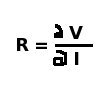I cannot see why, when talking about the resistance of semiconductors materials
its deemed necessary to explain in terms of semiconductor devices.
A piece of semiconductor material is passive, a semiconductor device ie a transistor/diode is formed
from the junction of two dissimilar semiconductor materials.
Conductors have a temperature/resistance coefficient and their resistance changes in a linear way with respect to temperature,
either in a negative or positive sense.
Manufactured alloys can be made that have close to zero temperature coefficients.
Manufactured compounds can be made that have a non linear resistance change with change in temperature,
again with a negative or positive sense.
Which ever type of material you choose, conductor or semi-conductor, it will obey Ohms Law at any given temperature.
The same rule applies to thermistor compounds.
You can say that a thermistor obeys Ohm's Law at a given temperature
the same way you can say a potentiometer obeys Ohm's Law at a
given rotation, but describing it that way misses the whole point
of having that given element in the first place.
For example, if a thermistor obeys Ohm's Law then try replacing
all the resistors in a TV set with thermistors and see what happens
once the set heats up a little.
A diode is a good example of a semiconductor (yes, with a junction)
because it is often the first thing looked at when talking about
the issues that come up with devices like this.


